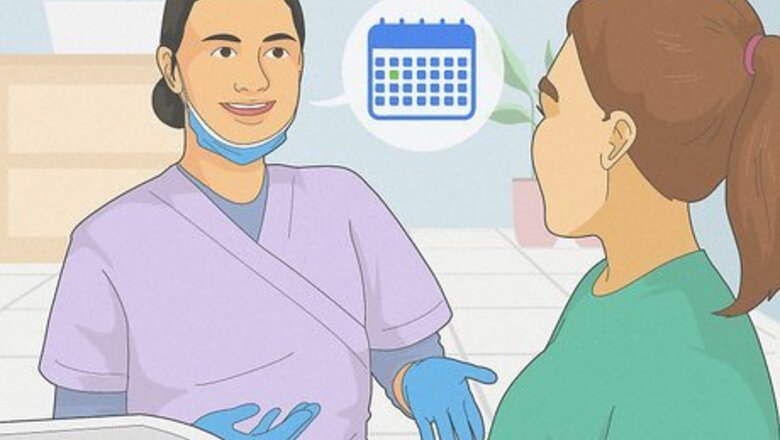
views
- Maintain good dental hygiene before you get your braces off to ensure you won’t be left with “white scars” (yellow tartar around where your braces used to be).
- Expect some scraping and pressure when your braces are being removed. This is entirely normal; however, if you feel pain, tell the orthodontist right away.
- Removing braces typically only takes a few minutes, but more work may need to be done by the orthodontist that’ll extend your visit.
Preparing for Removal
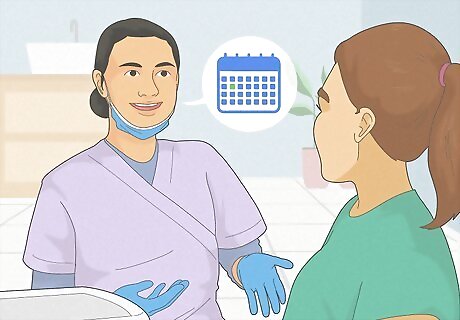
Know when the day will come. It's important to be sure about when your braces will be coming off, so you can prepare yourself. This is a big moment! There is no fixed time, but your orthodontist will tell you in advance of your visit. If you are unsure you can call and ask. Once you know when your braces will be removed you can read a few stories of other people's experiences. You can also find videos of the procedure online. Remember everyone's experience is likely to be a bit different.
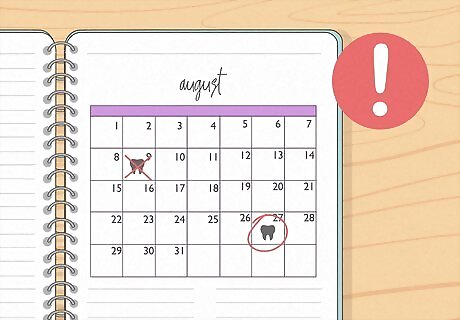
Understand that removal could be postponed. Although your orthodontist might have told that you will be getting your braces removed in your next visit, there is a chance that when you arrive they will tell you the removal has to be postponed. Your orthodontist has given you their best estimate, but it's not foolproof. It's possible that your teeth may have moved around unexpectedly between trips to the orthodontist. Or, they may have not moved enough and require a little more time with the braces. Even a week or two can make a huge difference in the end result. If this happens, don't get too dispirited. They will come off, it's just a waiting game.
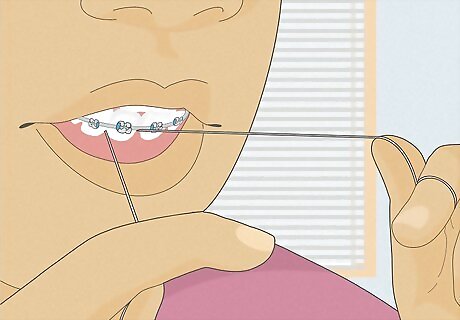
Ensure you maintain your dental hygiene. Throughout the whole period you have been wearing braces you should have maintained a high level of dental hygiene. How your teeth look without braces will depend on how well you have looked after them. If you have done a bad job you may find yellow tartar marks on your teeth called "white scars". Don't let your dental hygiene slack off when you see the end is in sight.
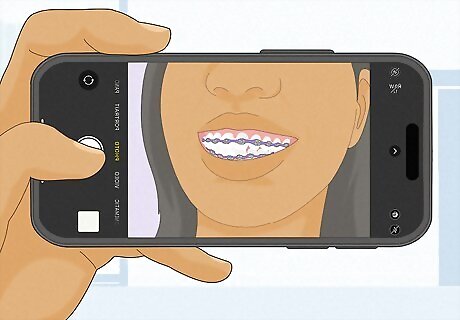
Take some pictures of your mouth. It can be nice to take a few photos of yourself in your last days with braces. You can use these as a "before" picture and compare it to the new you after you have had your braces removed. Getting braces is a big deal, and so is getting them taken off, so you should document this transition in your life.
Understanding the Removal Process

Know how long it could take. There is no fixed amount of time it will take to have your braces removed. One thing you can be sure of though, is that it will be much quicker than when you had them attached. Expect to be in there for around an hour for all the braces to be taken off and all the follow-up work to be done. Just removing the braces could take only a few minutes. After the braces are off there is more work to be done by the orthodontist.
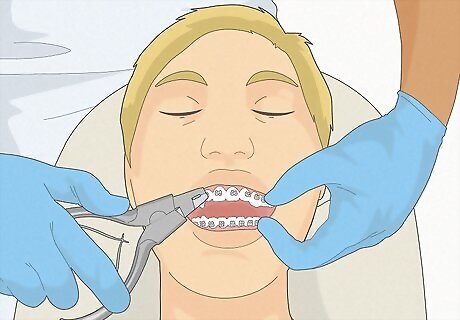
Understand how they are taken off. To remove your braces your orthodontist will use special pliers to gently squeeze each individual bracket. This will separate the bracket from the tooth. Most often the bracket will come off in one piece, and they will repeat this for your whole mouth. Some ceramic brackets are designed to break apart as they are taken off your tooth. If you hear some cracking noises or other odd sounds, just know that this is absolutely normal. Don’t worry if you hear anything like this. If you have bands across individual teeth, the orthodontist will remove these with pliers. You will feel some pressure when the brackets or bands are removed but little or no pain.
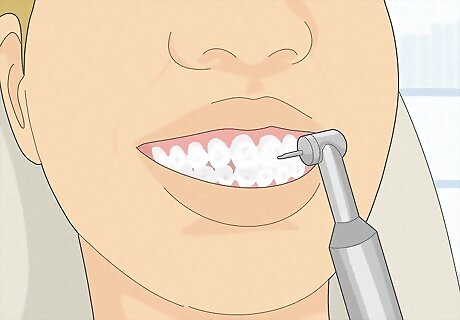
Be ready for some scraping. After the braces are off, there will be some left over residue of the glue or cement on your teeth. Your orthodontist will get to work scraping this off with a special instrument. Typically, this cleaning shouldn't take more than around five minutes depending on how much glue you have on your teeth. Depending on your teeth, you may feel a little sensitivity during this process. You'll be desperate to see your new teeth, but be patient!
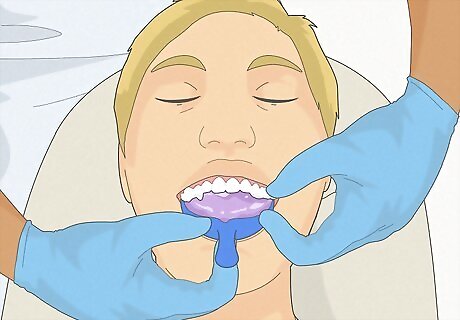
Expect to make a mold for your retainer. After your braces have come off and your teeth have been cleaned from the excess glue, your orthodontist will most likely begin to make a mold for your retainer. Almost all people who have had their braces removed need to wear a retainer afterwards. In some cases retainers can be fixed, meaning that your orthodontist will bond a metal or fiberglass wire behind your front teeth. The orthodontist may make the mold for your post-braces retainer around a week before the day you get them removed. Or they might do it a week after.
Knowing What to Expect Afterwards
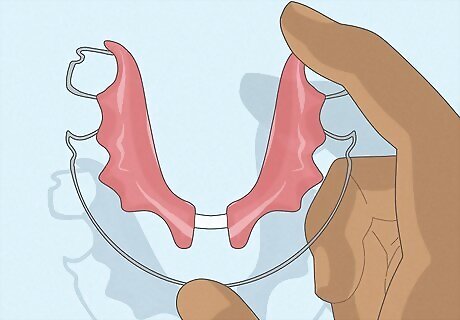
Be prepared to wear a retainer for a while. Don't be surprised when your orthodontist begins to measure you up for your retainer. It is important to have a retainer to hold your teeth in their new positions, and often an orthodontist will recommend wearing a retainer for years after your braces come off. But the time varies from person to person. The way a retainer works is that it literally "retains" the shape of your teeth's new alignment by gradually removing the "memory" of how your teeth looked before so that your teeth cannot go back to their original shape. You will need to take good care of your retainer. This involves cleaning it properly, and not losing it. Make sure you wear the retainer as advised or you could undo all your good work. Wearing the retainer provided for you is also a way to help to reduce the pain.
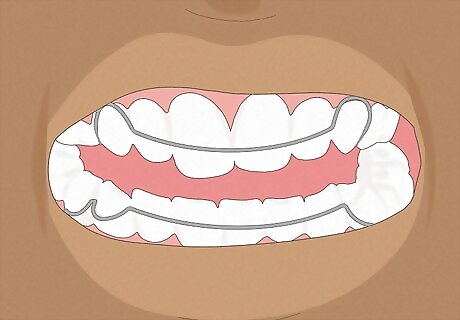
Adapt to your new retainer. Getting a retainer can be a little trying and take a bit of time to get used to, but it's an important part of straightening your teeth. The retainer might feel awkward in your mouth, and you may find it hard to speak, or discover that you are speaking with a lisp. The best way to deal with this is to speak and sing a lot so that you get used to the retainer. Do this, and your lisp should disappear in a few days. If you find you have some excess drool or saliva don't worry, this is part of the adaptation and should go in a few days. Make sure you use your retainer according to your orthodontist's indications. After a while, you will only have to use it during the night.
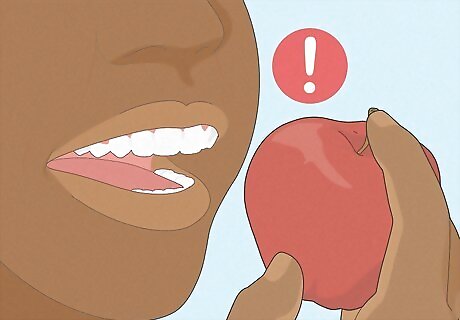
Care for your teeth after braces. Don't dive straight into all the chewy food you couldn't eat with braces. Allow your teeth some time to adapt and heal. Talk to your orthodontist about how to care for your teeth after the braces have come off. The more closely you follow the orthodontist's guidance the better off your teeth will be, and the sooner you will be able to get rid of the retainer as well. The newly exposed enamel will be extra sensitive and dry, so wait at least a month before any whitening or bleaching treatments. Speak to your dentist about a safe way to whiten any stains on your teeth left from the braces. There are many ways to whiten your teeth including some home remedies that do not use chemicals.
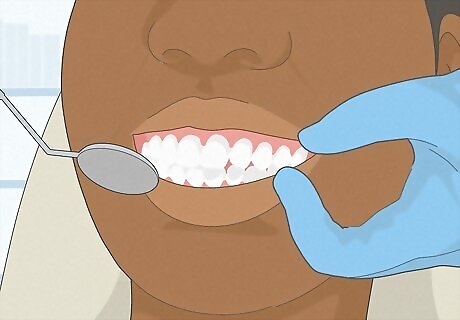
Understand that you will have to keep returning to the orthodontist. You will still need to visit your orthodontist regularly once you have had your braces removed and are wearing your retainer. they will check up on your teeth to make sure they are staying in shape and your smile is looking great. Book an initial follow-up visit for a couple of weeks after your braces are removed.



















Comments
0 comment